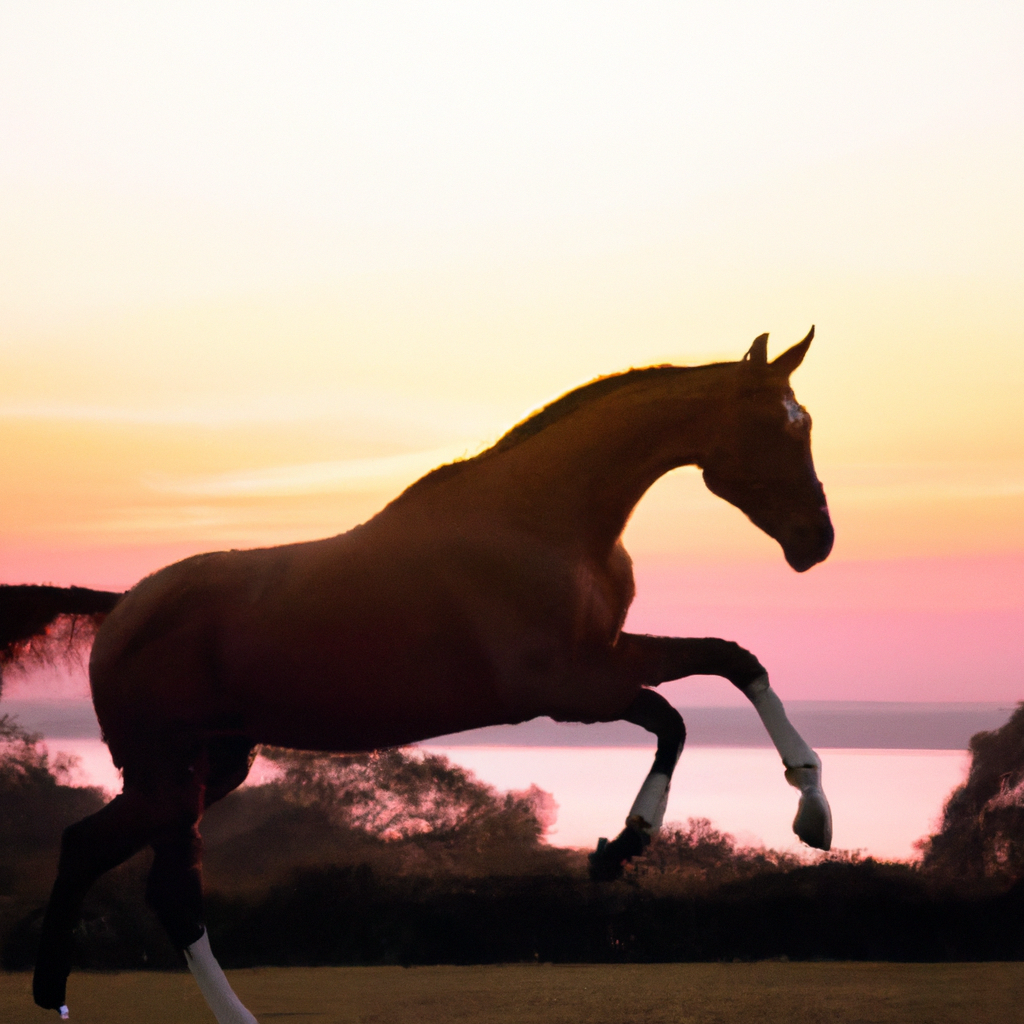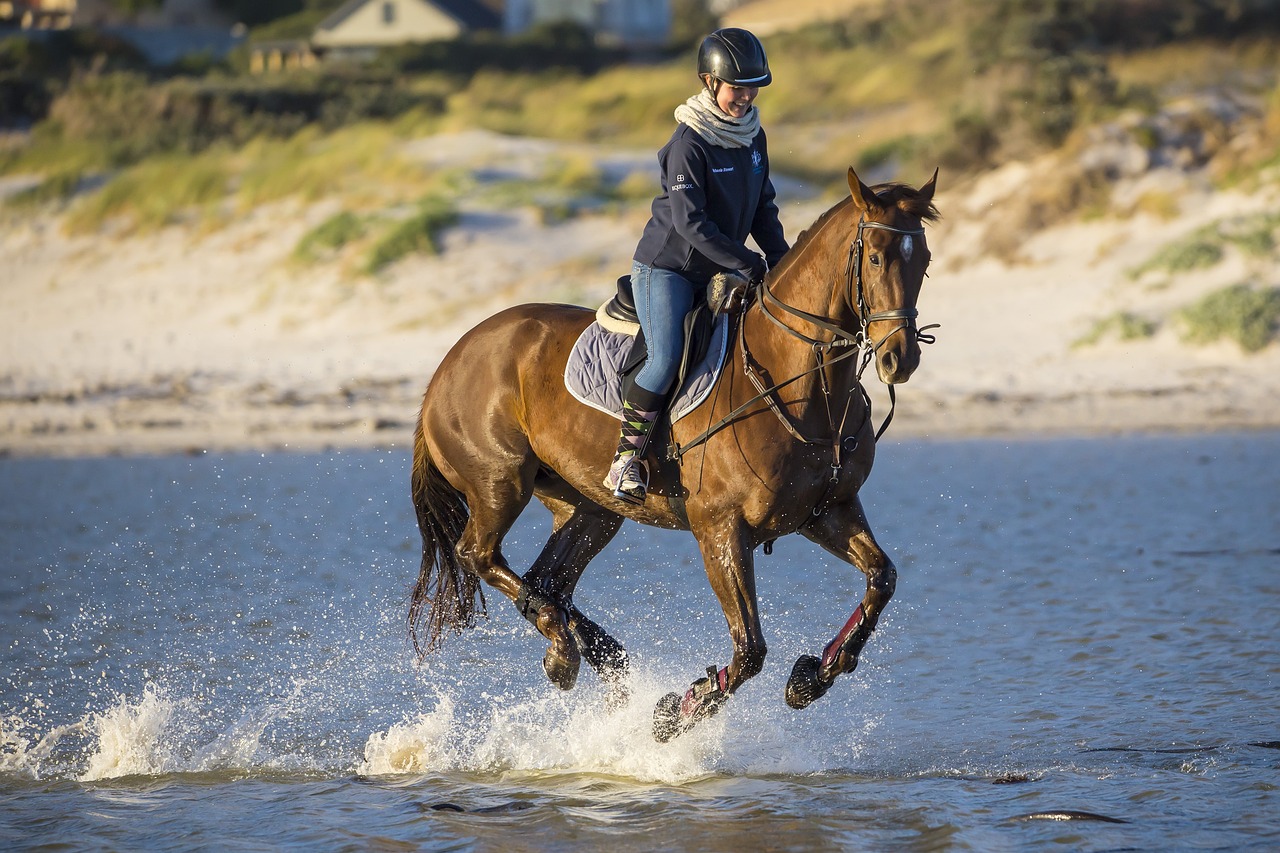Getting on the back of a horse for the first time can be a fascinating yet daunting experience. The article “Mastering Horse Riding Basics,” is your ultimate guide to learning the fundamental techniques of horseback riding. It aims to build your confidence and shape you into a competent rider by shedding light on the essentials, such as proper posture, understanding your horse, controlling movements, and much more. Equipped with these basics; you’ll not just ride but truly partner with your horse in a delightful bonding journey.
Understanding the Basics of Horsemanship
Before you can jump in the saddle, it’s vital to understand the basics of horsemanship, from horse anatomy to horse language. This equine primer is your launching pad into the world of horse riding.
Knowing the Horse Anatomy
A horse’s anatomy is an intricate structure of bones, muscles, and organs, each playing an integral role in their functioning and behavior. Familiarize yourself with everything from their musculoskeletal system to understanding the nuances of their eyes and ears. A well-rounded knowledge of horse anatomy will help you feel more comfortable while riding and allow you to spot any potential health concerns.
Interpreting the Horse’s Mood
Just like humans, horses have moods too. They express their feelings through physical cues, such as their body language, noises, and facial expressions. Learning to interpret these signs can clue you in on your horse’s comfort, excitement, fear, or irritation, effectively enhancing your communication and bonding with them.
Understanding Horse Behavior
Horse behavior can be incredibly nuanced; understanding it is key to successful horsemanship. Remember, horses are prey animals, hence their great instinct to run when frightened. Recognize signs of stress, boredom, or illness by observing changes in their normal behavior. Also, horses are herd animals, meaning they thrive in social settings. So, nurturing a deep bond with them can boost their happiness and wellbeing.
Familiarizing with the Horse Language
Learning the horse language allows you to understand your equine friend better and foster a stronger bond with them. Remember, horses communicate mostly through body language. Watch for their ears, eyes, tail, and overall body movements to understand if they feel threatened, content, alert, or playful; this will drastically enhance your horsemanship.
Choosing the Right Horse
Selecting the right horse is a crucial part of embarking on your horse riding journey. It involves considering the horse’s breed, temperament, health, age, and evaluating its suitability to your skill level.
Considering the Horse’s Breed
Different horse breeds have different characteristics and are bred for various purposes, from racing and dressage to ranch work and carriage pulling. Identify what kind of riding style you’re interested in before deciding on a breed.
Evaluating the Horse’s Characteristics & Temperament
Every horse has its own set of characteristics and temperament. While some are calm and easygoing, others are more spirited and lively. Give yourself time to interact with a horse before making a choice. Observing its behavior around other horses and humans can offer valuable insights into its temperament.
Assessing the Horse’s Health and Age
Considering the horse’s age and health conditions is paramount before bringing it home. A thorough vet check can help ensure the horse is healthy and fit for riding. The age of the horse significantly impacts its training, hence should align with your riding skill and goals.
Finding the Suitable Horse for a Rider’s Skill Level
The rider’s skill level should be in harmony with the horse’s training level. For beginners, a well-trained, experienced horse can provide a safer and more enjoyable riding experience. As you progress, you can choose a less-trained horse to practice and improve your training skills.
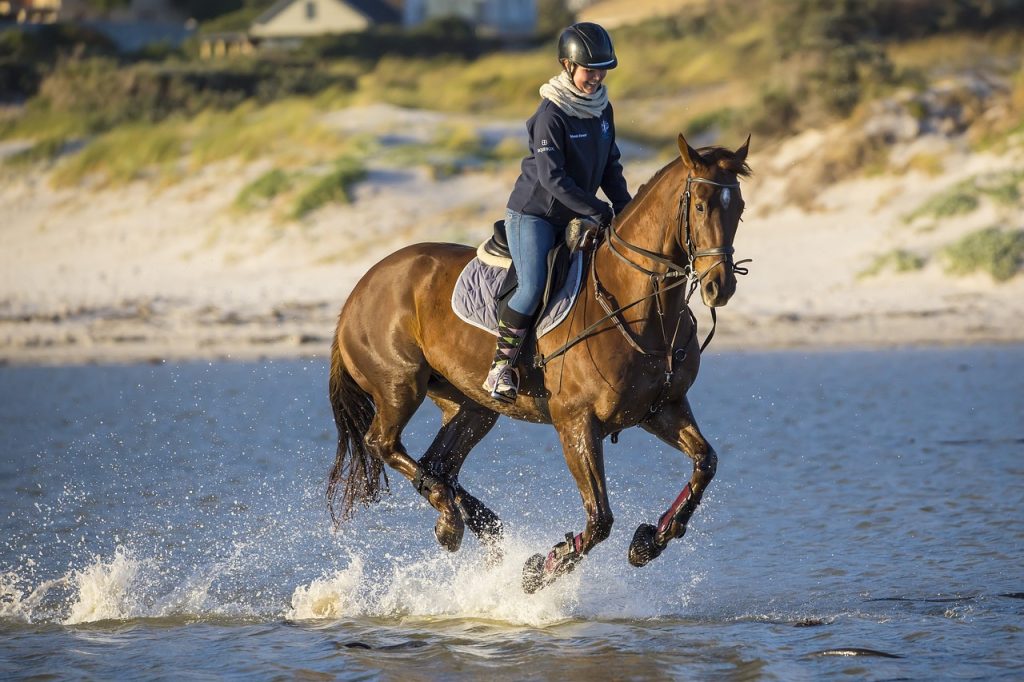
Essentials of Horse Riding Equipment
Choosing the correct horse riding equipment is a must for the safety and comfort of both rider and horse. From helmets to riding boots and apparel, every piece of gear has its purpose.
Selecting the Appropriate Riding Helmets
Safety should never be compromised. An appropriately-sized riding helmet is your best defense against head injuries. Ensure it’s snug but comfortable and adheres to safety standards.
Understanding the Use of Saddles
Saddles play a significant role in maintaining the rider’s balance and ensuring the horse’s comfort. The right saddle fits both horse and rider. It should distribute the rider’s weight evenly and should not pinch or add pressure on the horse’s back.
Checking the Bridles and Bits
Bridles and bits are indispensable tools for communicating with your horse while riding. Ensure that the bit is comfortable in the horse’s mouth and always inspect the bridle for any signs of wear and tear.
Importance of Riding Boots and Safety Stirrups
A good pair of riding boots provide protection and support while riding. Paired with safety stirrups, they ensure secure footing and help prevent your foot from getting stuck in case of a fall.
Choosing Comfortable Riding Apparel
Comfortable riding apparel goes hand-in-hand with safety gear. Riding breeches, shirts, gloves can provide protection from the elements and improve your comfort level while riding.
Maintaining the Horse Riding Gears
Routine maintenance of your riding gear is essential for ensuring their longevity and effectiveness. Clean and inspect them regularly for any damage or flaws.
Learning Basic Horse Riding Stances
A correct riding stance goes a long way in ensuring both your and your horse’s comfort and safety. It also aids in effective communication with your horse.
Posture on the Saddle
Your posture on the saddle is key. Sit up tall, align your spine with the horse’s, and distribute your weight evenly. Relax your shoulders and maintain a slight curve in your lower back.
Hand Position while Riding
Hold the reins gently in your hands, with thumbs on top and fists closed. Your hands should be a comfortable distance apart and move fluidly with the movement of the horse’s head.
Maintaining Foot Position in the Stirrups
Place the balls of your feet in the stirrups and keep your heels slightly lower than your toes. This position offers maximum stability and allows you to apply leg aids effectively.
Balancing the Rider’s Weight while Riding
Distributing your weight evenly when riding is crucial for maintaining balance. Lean slightly forward when your horse is moving uphill and slightly back while they are going downhill.
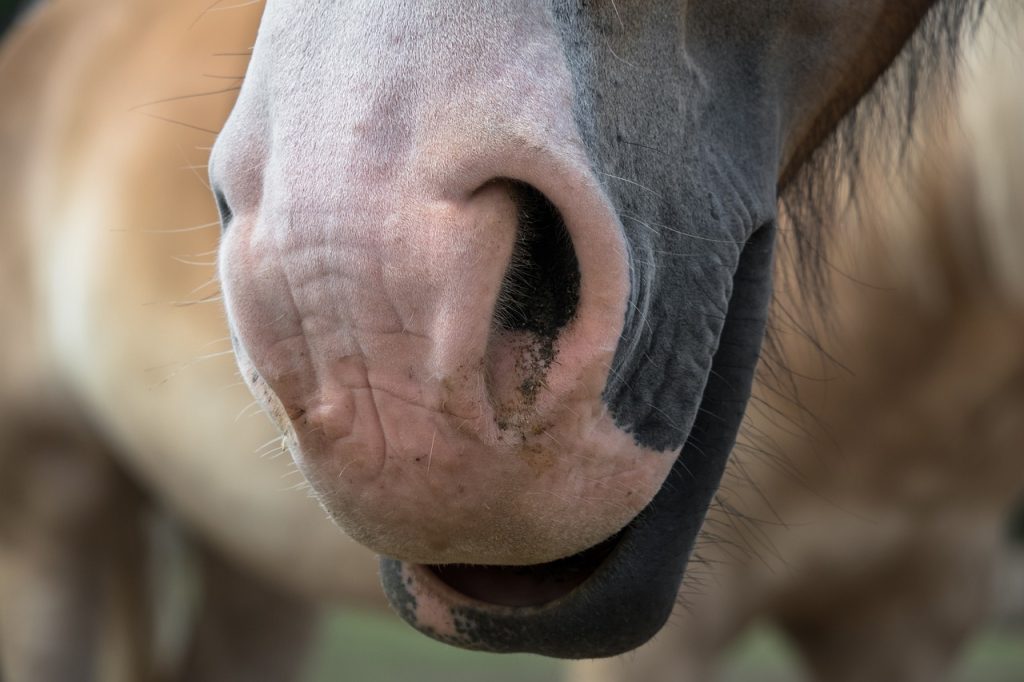
Mastering Control of the Horse
Controlling your horse involves intricate communication through reins, rider’s seat, and leg aids. Mastery over these will ensure you are always in control and can guide your horse effectively.
Communicating Through Reins
The reins form the primary channel of communication with your horse. By changing the reins’ tension and direction, you can guide your horse’s movement, speed, and direction.
Transmitting Signals Through the Rider’s Seat
Subtle shifts in the rider’s seat act as effective communication signals with the horse. By altering the pressure of your seat bones, you can increase or decrease the horse’s speed and motivate lateral movements.
Understanding Horse’s Response to Leg Aid
Leg aids play a significant role in guiding your horse. A gentle squeeze or a tap with your calf can cue the horse to move forward, increase its pace or change its gait.
Fundamental Horse Riding Skills
To ride confidently, you need to master a handful of fundamental skills, from starting and stopping your horse to mastering the canter.
Starting and Stopping the Horse
The most basic yet crucial skill is to start and stop your horse. A gentle squeeze with your calf will urge your horse to walk. To stop, sit deep in your saddle, stop moving your hips, and gently apply pressure on the reins.
Steering the Horse and Changing Directions
Guiding your horse in the right direction involves a combination of rein, seat, and leg aids. Remember to shift your weight subtly in the direction you want to go and apply rein aids accordingly.
Learning to Trot
Trotting is a two-beat gait that requires constant practice. It involves rising and falling rhythmically with your horse’s strides, often referred to as “posting.”
Planning and Riding a Circle
Riding in a circle can help improve your balance and coordination. Maintain a steady rhythm and use a combination of rein and leg aids to guide your horse.
Mastering the Canter
Cantering, a three-beat gait, is a smooth and controlled motion. It requires refined balance and tactile communication through the seat, reins, and legs.
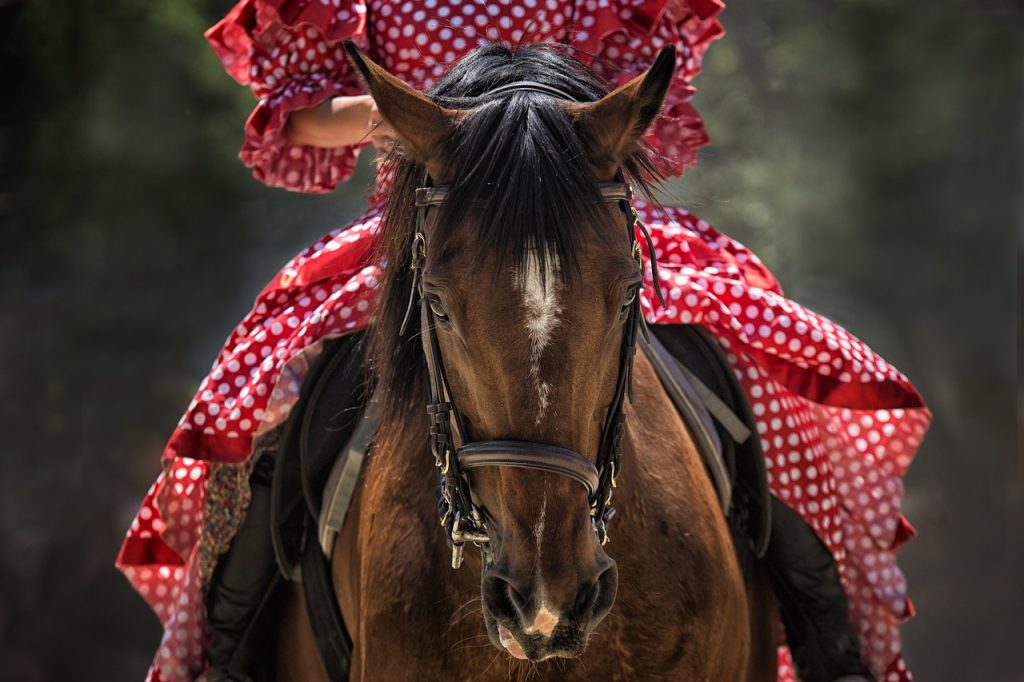
Common Mistakes in Horse Riding
Everyone makes mistakes when learning how to ride. However, by recognizing and correcting these, you can improve your riding skills more rapidly.
Poor Posture on the Horse
Slouching or leaning too far forward or backward can throw off your balance and makes it harder to control the horse. Always maintain an upright and relaxed posture.
Pulling Too Hard on the Reins
Tugging on the reins too harshly can cause discomfort to the horse and confuse them. Use subtle movements and ensure your hands move in sync with your horse’s head.
Neglecting to Use Legs for Steering
Many beginners rely solely on the reins for steering. However, your horse responds best to a combination of leg, seat, and rein aids.
Harsh Handling of the Horse
Horses respond to kindness and understanding. Harsh handling or shoving may confuse or frighten them, leading to undesirable behavior.
Ignoring Safety Measures
Never neglect safety while riding. Always wear a helmet, use appropriate gear, and ensure your horse is in good health before riding.
Safety Guidelines in Horse Riding
Horses are powerful animals, and while they are generally gentle, situations can quickly go wrong. Following safety guidelines can help ensure a safe ride for both you and your horse.
Investing in Safety Gear
Investing in high-quality safety gear, such as helmets, safety stirrups, and padded vests, can greatly reduce the risk of injuries.
Understanding and Respecting the Horse’s Boundaries
Just like us, horses too have personal space that should be respected. Learn to read your horse’s mood and give them their space when they seem distressed or irritated.
Importance of Regular Horse Health Checks
A healthy horse is a safe horse. Regular health checks can help catch any potential issues early, ensuring your horse remains in top shape.
Guidelines for Safe Group Riding
Group riding can be a fun experience, but it comes with its rules. Maintain a safe distance between horses, and remember to respect the pace of the slowest horse.
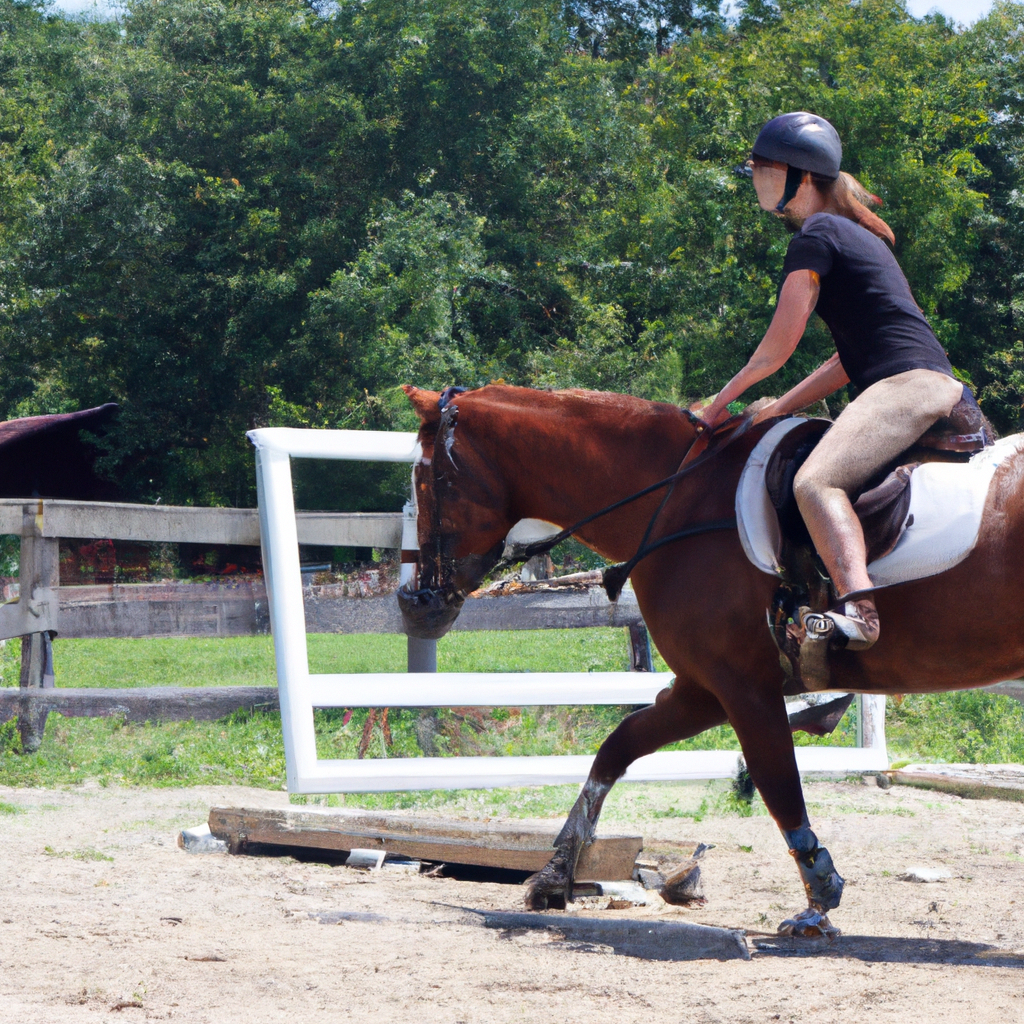
Benefits of Regular Horse Riding
The benefits of horse riding are vast, enriching not only your physical health but also enhancing your mental wellbeing and interpersonal skills.
Physical Health Benefits
Riding is a whole-body workout! It engages your core, improving stability and posture. It also enhances your leg strength and overall flexibility.
Mental Health Benefits
Spending time around horses and riding can have a therapeutic effect and significantly reduce stress. It can boost your mood, improve focus, and foster a sense of calm.
Building Interpersonal Skills
Interacting with your horse and other members of the equestrian community can improve your interpersonal skills. It fosters empathy, teamwork, and communication.
Learning Patience and Responsibility
Horse riding and care demand patience and responsibility. You learn to put the needs of another living being before your own, thus enhancing caring skills and adding a sense of achievement to your life.
Progressing Your Horse Riding Skills
Once you’ve mastered the basics, it’s time to challenge yourself and level up your horse riding skills. Here’s how you can do it.
Investing in Regular Horse Riding Lessons
Consistent lessons from a professional instructor can provide valuable guidance for improved riding. Choose an instructor whose teaching style matches well with your learning style.
Participating in Horse Riding Competitions
Competitions offer a great platform for learning, improvement, and testing your skills. You’ll learn to perform under pressure, work as a team, and accept failures as a stepping stone for success.
Exploring Different Horse Riding Styles
Once comfortable with basic riding, consider exploring different riding styles like dressage, eventing, showjumping, or western riding. Each style has its challenges and rewards.
Staying Updated with Latest Horse Riding Techniques and Research
Like any other field, horse riding too evolves with new techniques and research. Stay updated on the latest findings and integrate them into your riding and horse care routine for constantly improved skills.
Remember, your horse riding journey is a marathon, not a sprint. Each day with your horse is a new opportunity to learn and grow as a horseman. Enjoy the ride!
